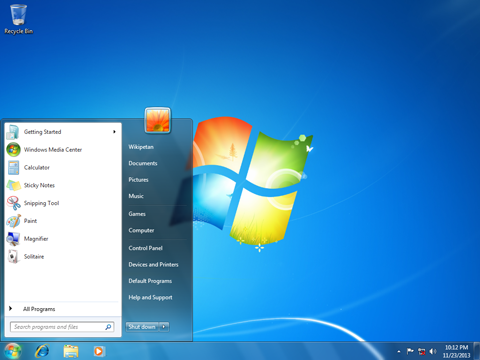
Xenocode Virtual Desktop Windows 7
Get Virtual Desktops While Microsoft’s Virtual Desktops PowerToy hasn’t worked since Windows XP, they do provide another tool that will let you use virtual desktops on modern versions of Windows. The tool is small, lightweight, and free. You don’t have to pay up, deal with nag screens, or deal with a cluttered application to use them. RELATED: Download from MIcrosoft’s Windows Sysinternals site.
Sysinternals was once a third-party collection of tools, but the Sysinternals tools are so useful and powerful that Microsoft bought them all a few years ago. If you’re a Windows power user, you should.
Dreambox image install with flash wizard pro 7020 sayl 2. However, they do have a Commercial edition trial, which includes the. Learn how to remove Xenocode Virtual Application Studio from your computer. Virtual desktop manager for Windows. Xenocode virtual desktop download. T, Source Code, Botnet., Binder, Crypter Please contact the publisher of this. Aug 30, 2017 Xenocode Virtual Application Studio 6. Apr 16, 2015 - We know there's a vocal set of people who just love virtual desktops. When our team set out to build virtual desktops into Windows 10 we first took the time to understand how different. Updated June 28, 2018 7:20 am.
Most of them are powerful system utilities full of useful information — not small tools like this one. Open the downloaded Desktops.zip file, extract the Desktops.exe file, and double-click it. You’ll see the minimal Desktops setup window.
If you want to run the tool automatically at login, click the Run automatically at logon checkbox. Switching Between Desktops You can customize the keys for switching between virtual desktops, but by default you’ll use Alt+1/2/3/4 to switch between your four virtual desktops. You can also click the system tray icon to see an overview of your desktops and switch between them. To change your hotkeys, right-click the system tray icon and select Options. The first time you switch to a virtual desktop, Windows will “create” it — it’s loading a new copy of Explorer.exe for that desktop. Windows you open on other desktops won’t appear to be open on your other desktops, so you can’t switch to them with the taskbar or Alt+Tab.
You’ll have to switch back to their associated desktop first. Each desktop also has its own separate system tray — so system tray icons from your first desktop won’t appear on your other desktops. If you open an application on your second desktop and it loads a system tray icon, that system tray icon will only appear in the system tray on your second desktop, and not your first, third, or fourth desktops. Assigning Windows to Desktops To launch on application window on a specific desktop, first switch to that desktop and then from your taskbar, Start menu, or wherever else. Unfortunately, you can’t actually move windows between virtual desktops once they’re open. To move a window to a different desktop, you have to close it and then re-open it on that other desktop.
Try to set up workspaces for specific tasks so you don’t have to constantly juggle windows between desktops. Closing Desktops v2.0 The recommended way to close Desktops v2.0 is to log off and log back on. Of course, if you want to stop using it, you should disable the “Run automatically at logon” option first. Why the Limitations? RELATED: The Sysinternals Desktops v2.0 downloads page explains the limitations of the tool well. There are other virtual desktop tools that seem more powerful.

For example, l and there are you can download. These tools generally have more features and can feel a bit more “seamless” — you can move windows between virtual desktops and see all your open windows on each desktop’s taskbar, if you like. However, most virtual desktop tools just work by minimizing and maximizing windows. They don’t create real virtual desktops — they “fake it” by remembering which windows should be minimized and which should be maximized. If you’ve used a tool like this in the past, you may have seen your windows minimize and maximize as you switch between desktops. Desktops v2.0 uses the features built into Windows, so it’s much more lightweight and — arguably — less buggy than these other tools.
If you can live with the limitations, it may be a more powerful, solid virtual desktop option than other third-party desktop tools. Hopefully Microsoft will extend this feature. Windows 9 should have a way to move windows between virtual desktops and a nice interface. For now, this is the most official way to unlock the native virtual desktop support that’s been part of Windows since Windows NT 4, released back in 1996.